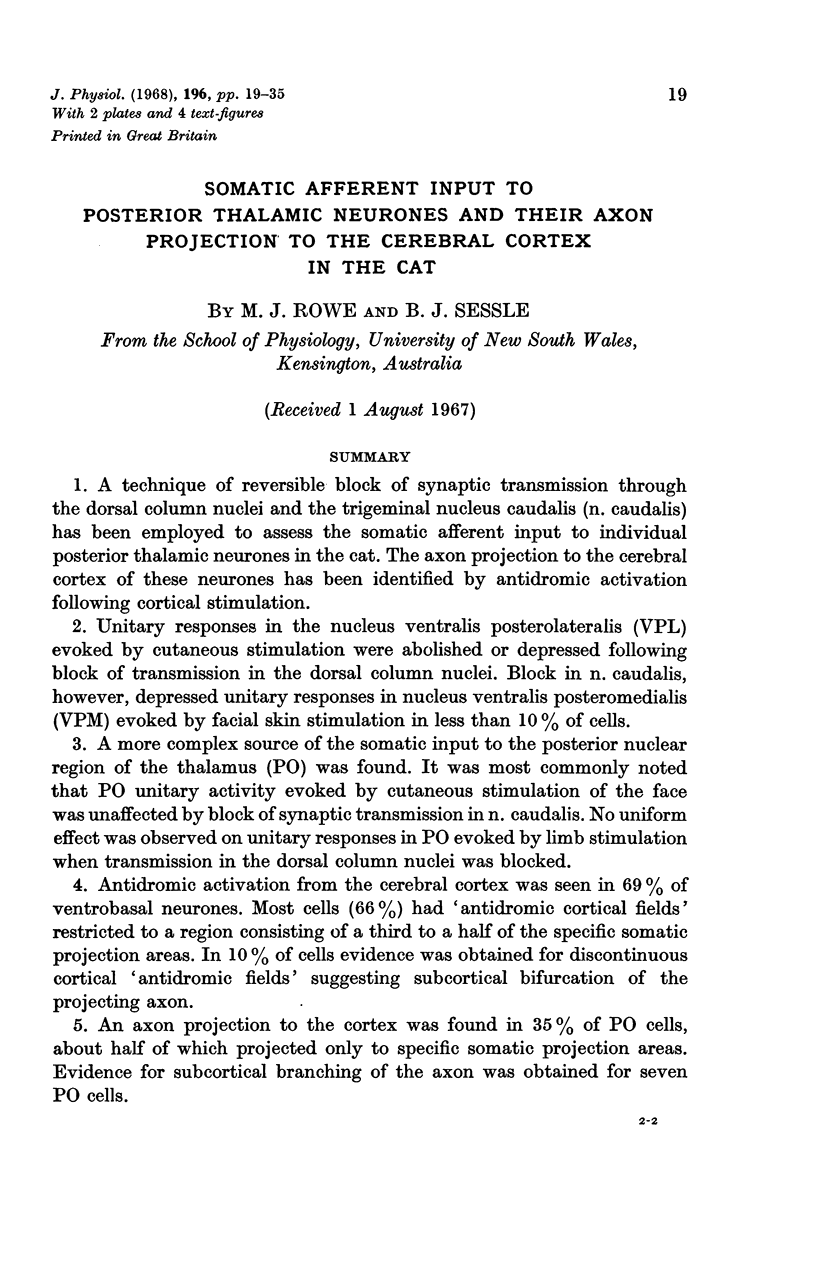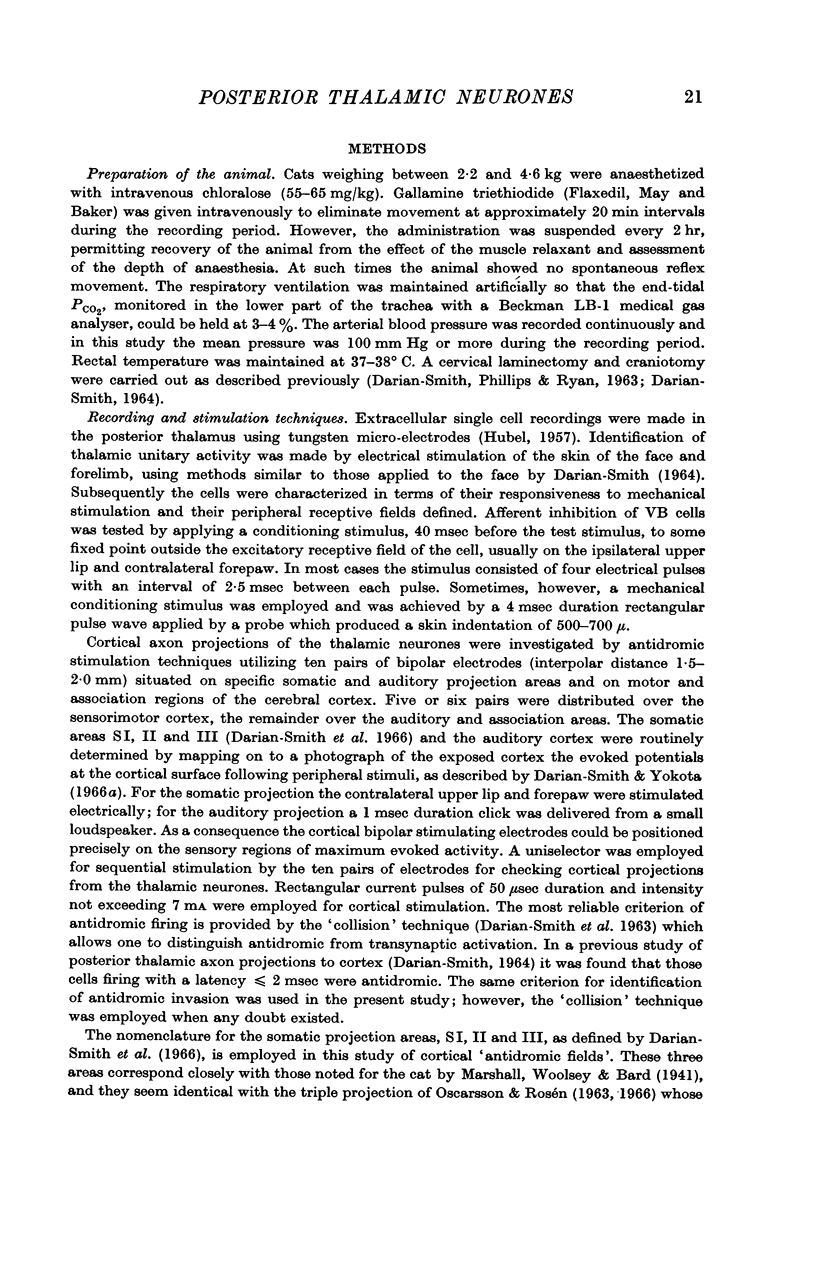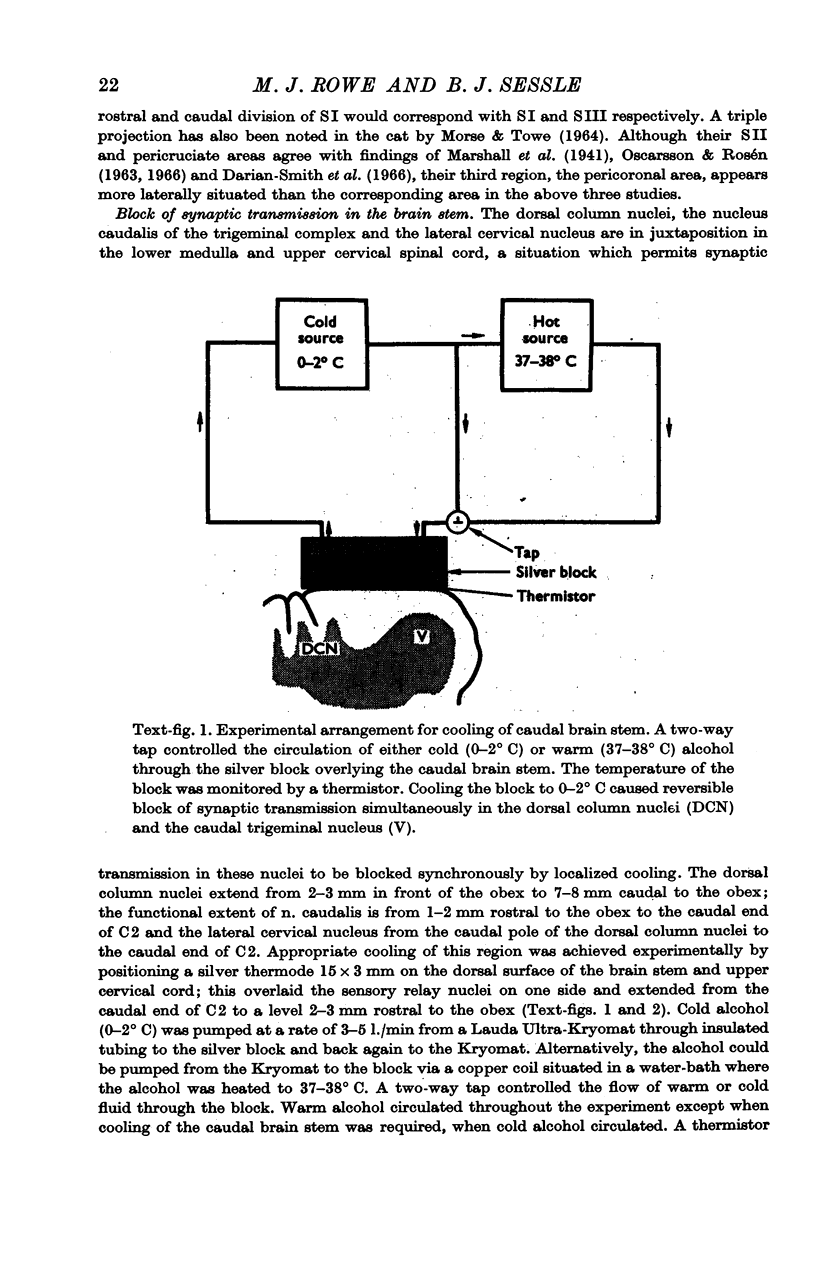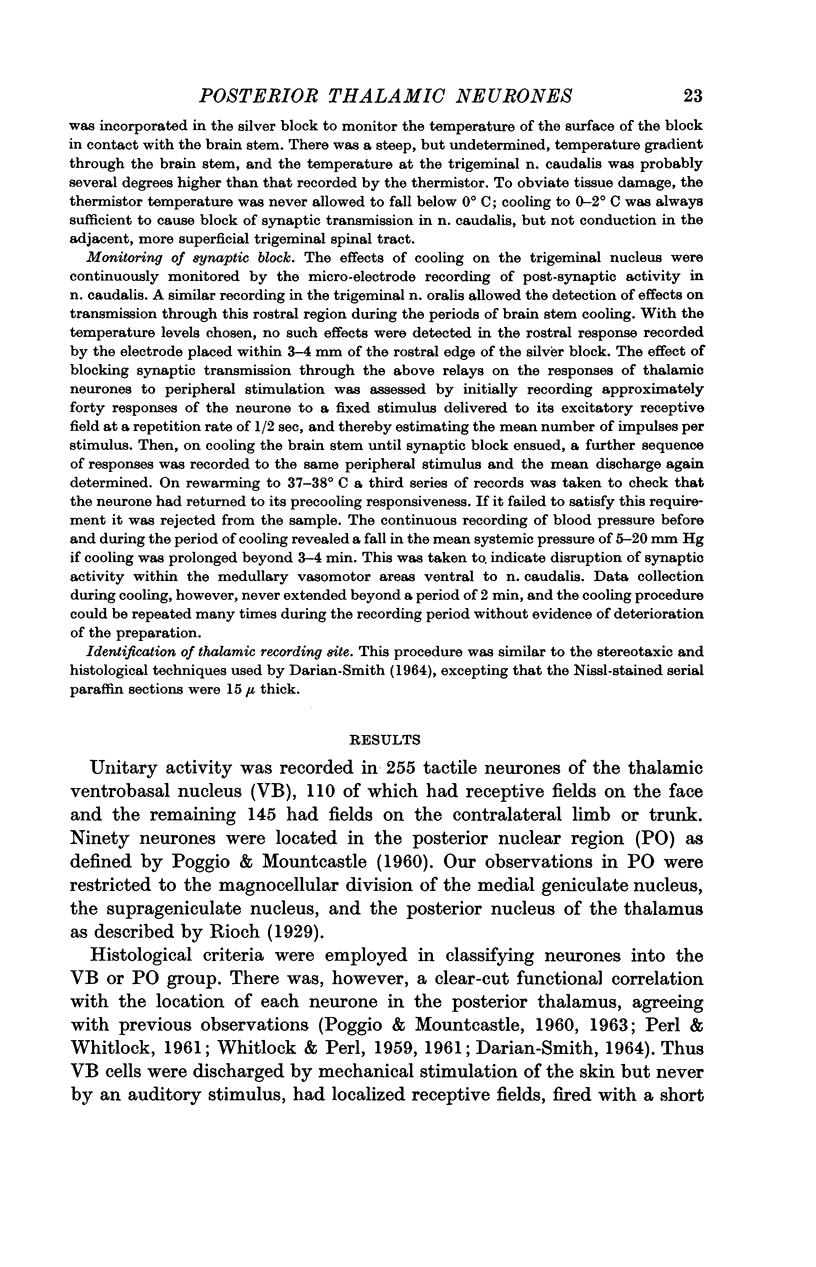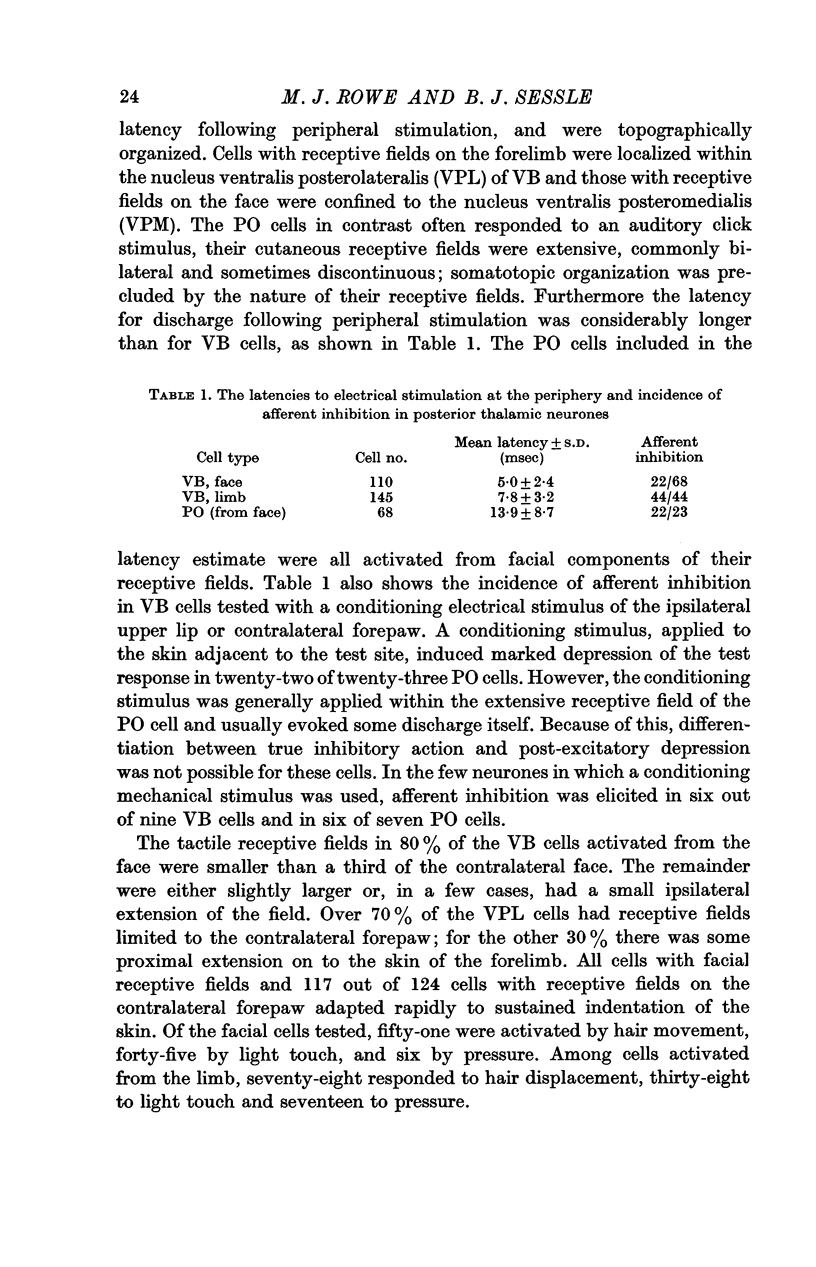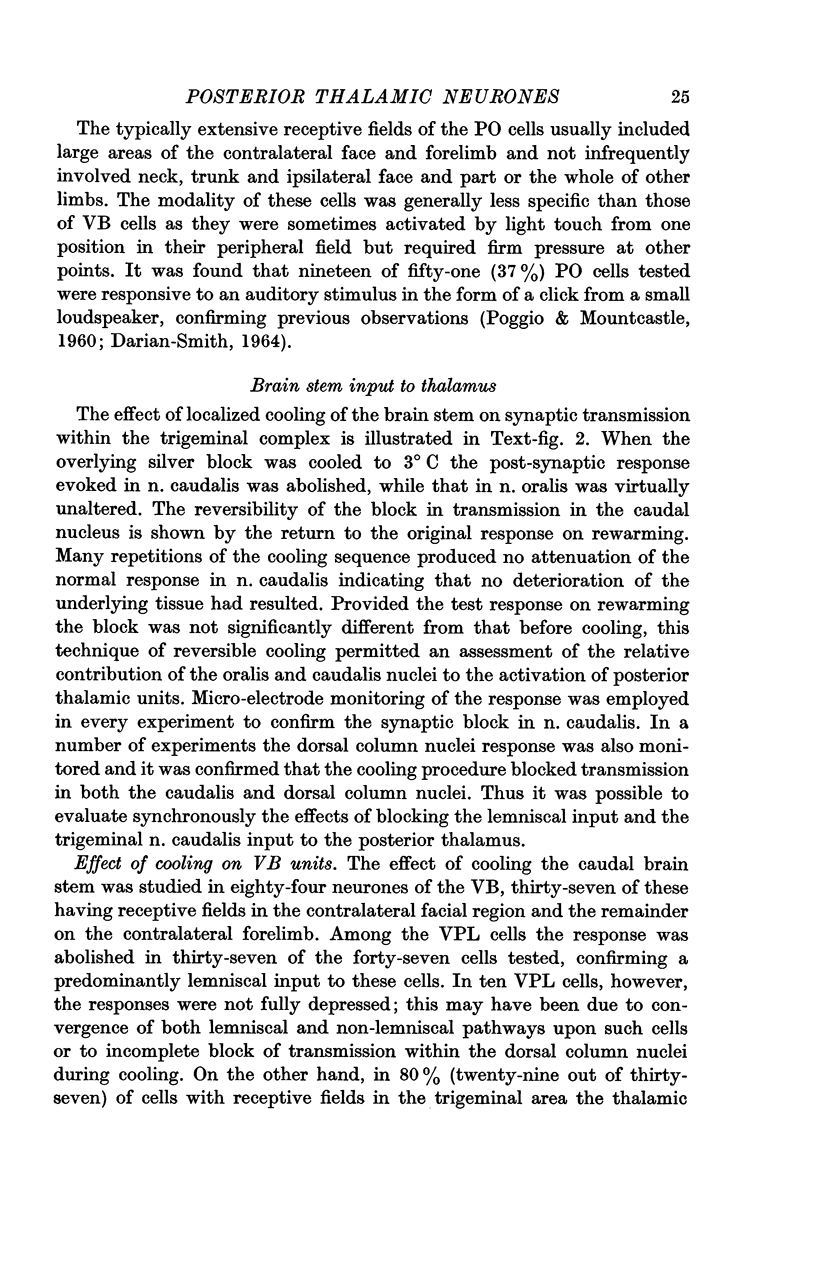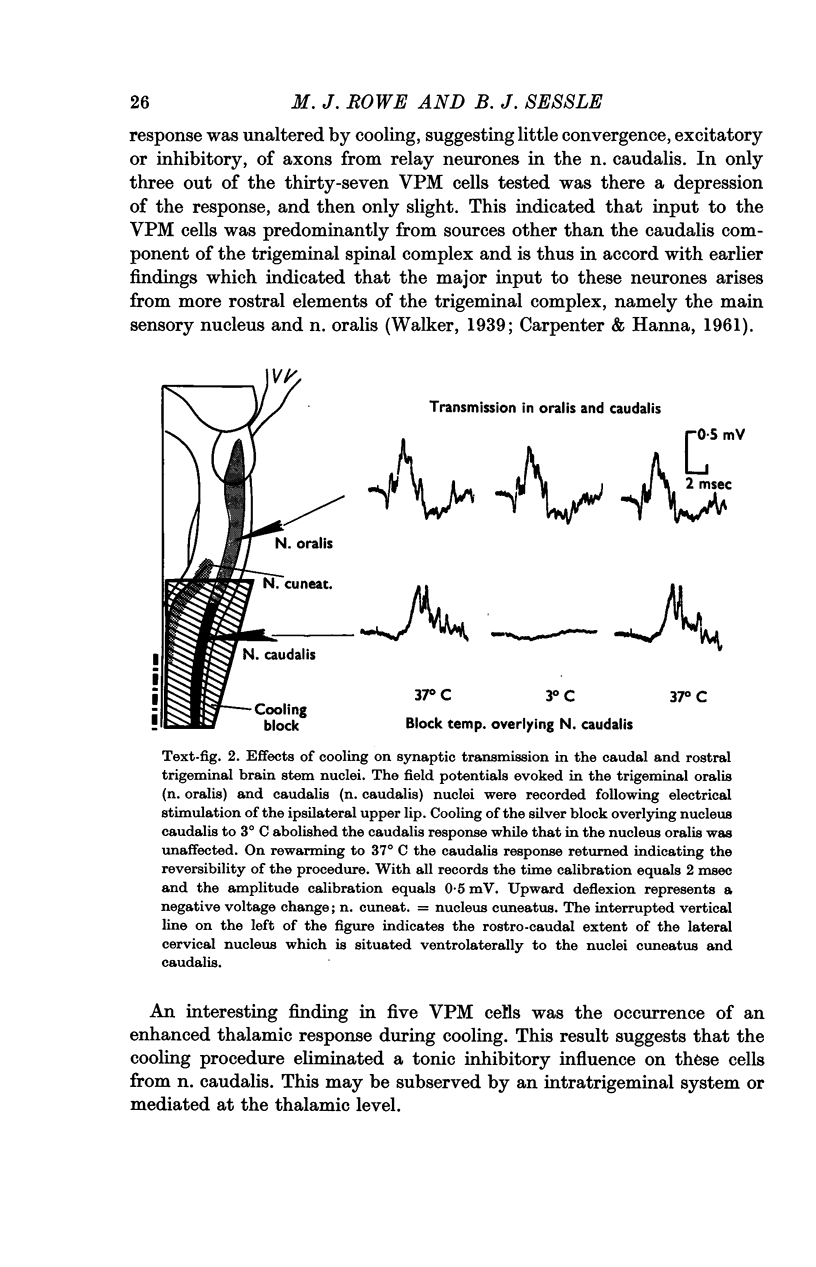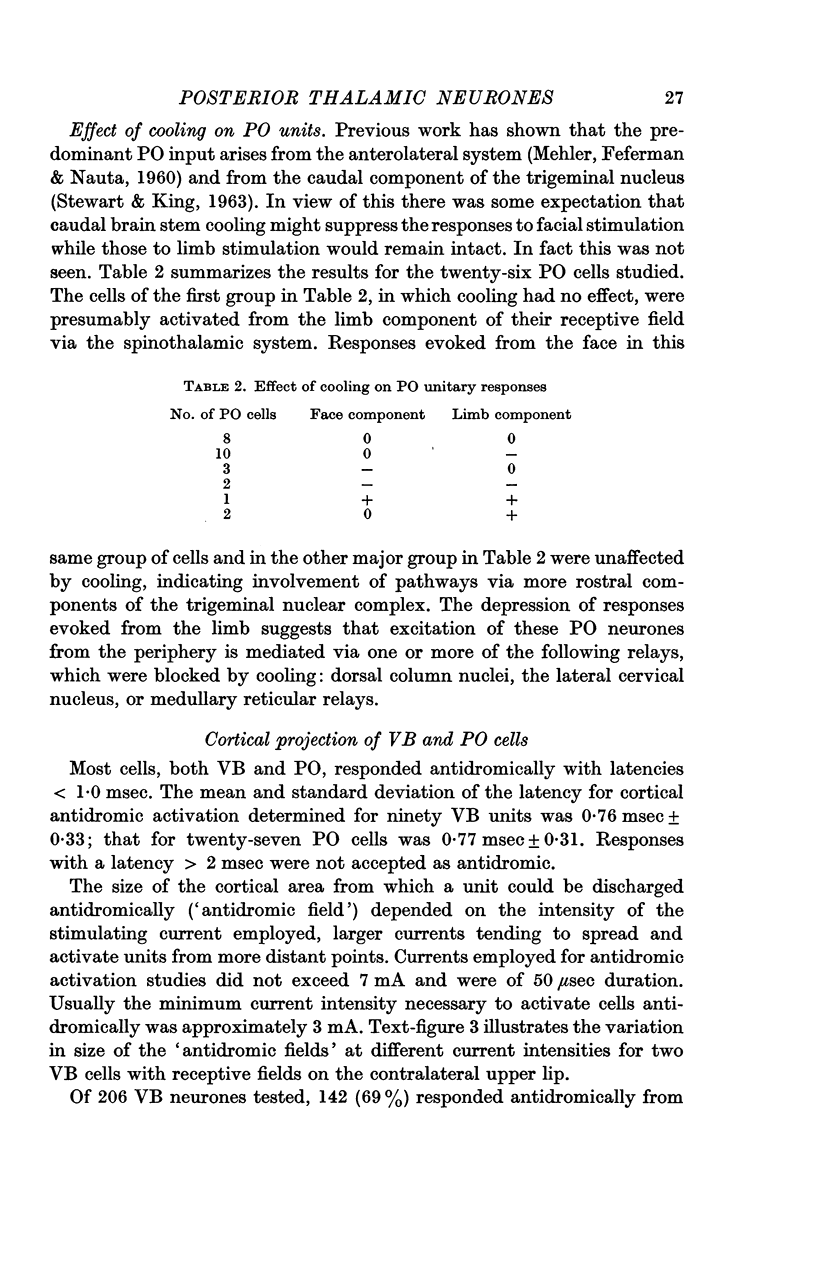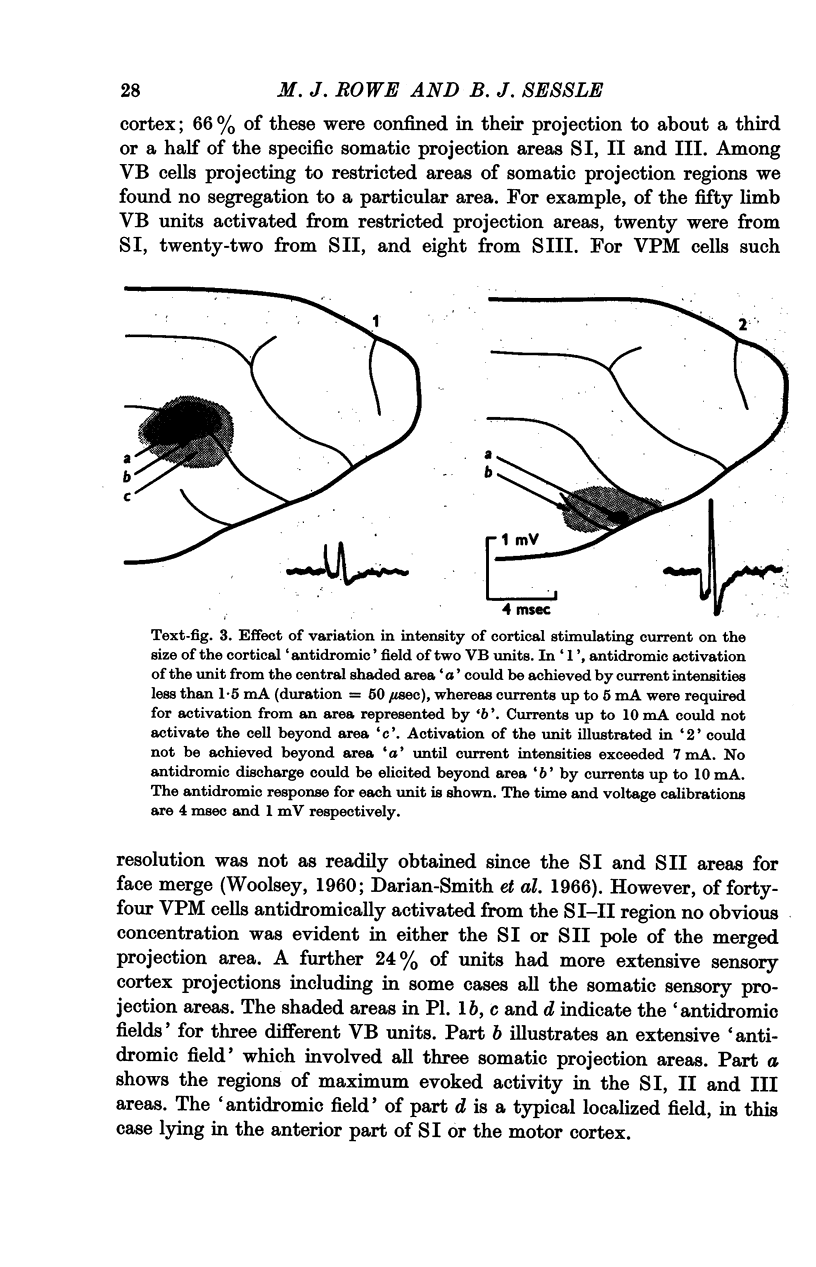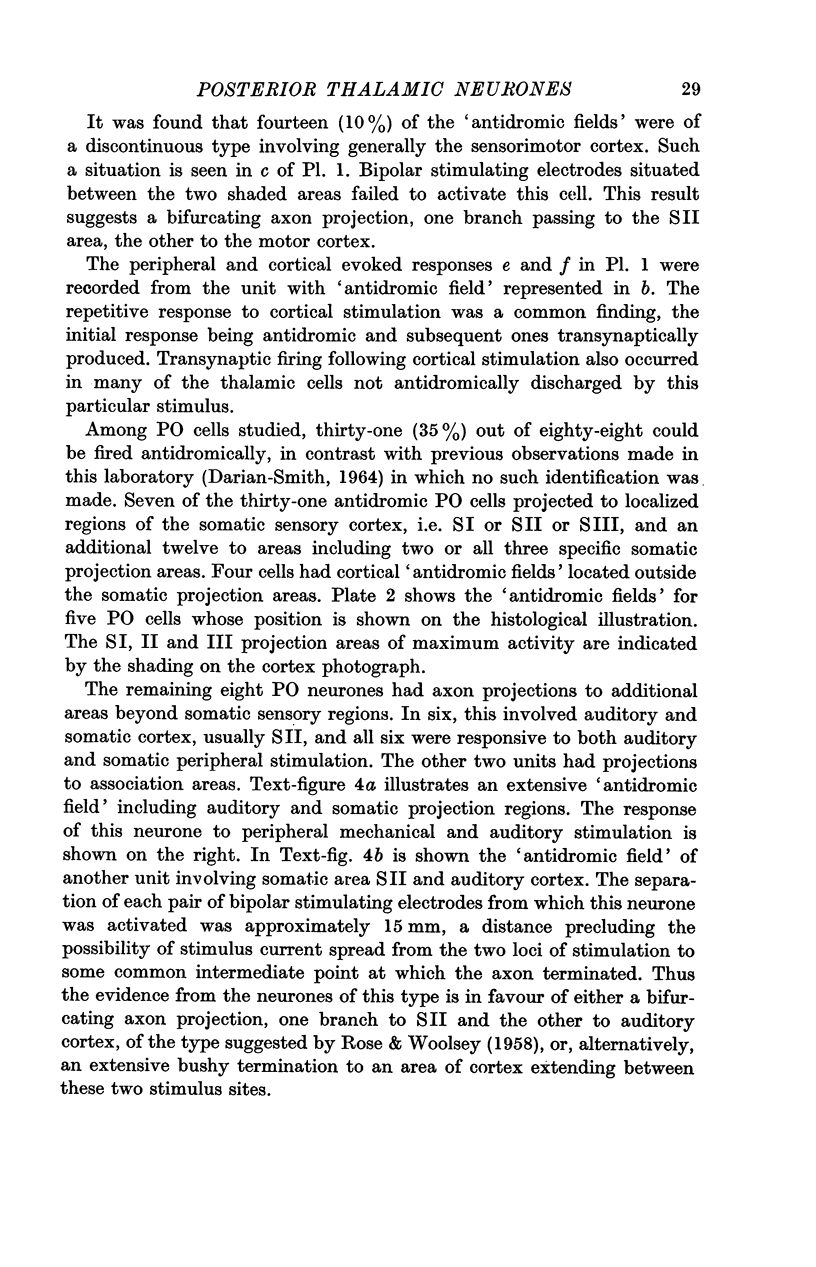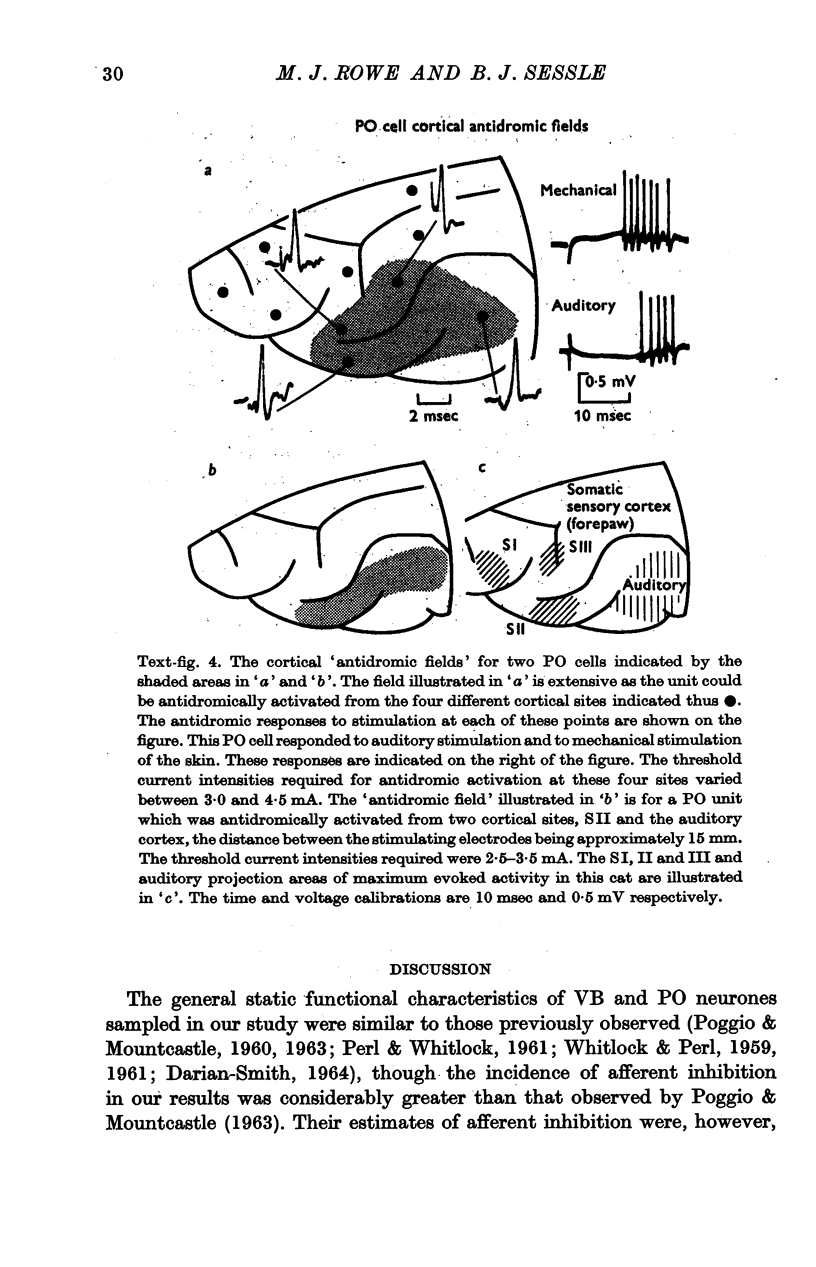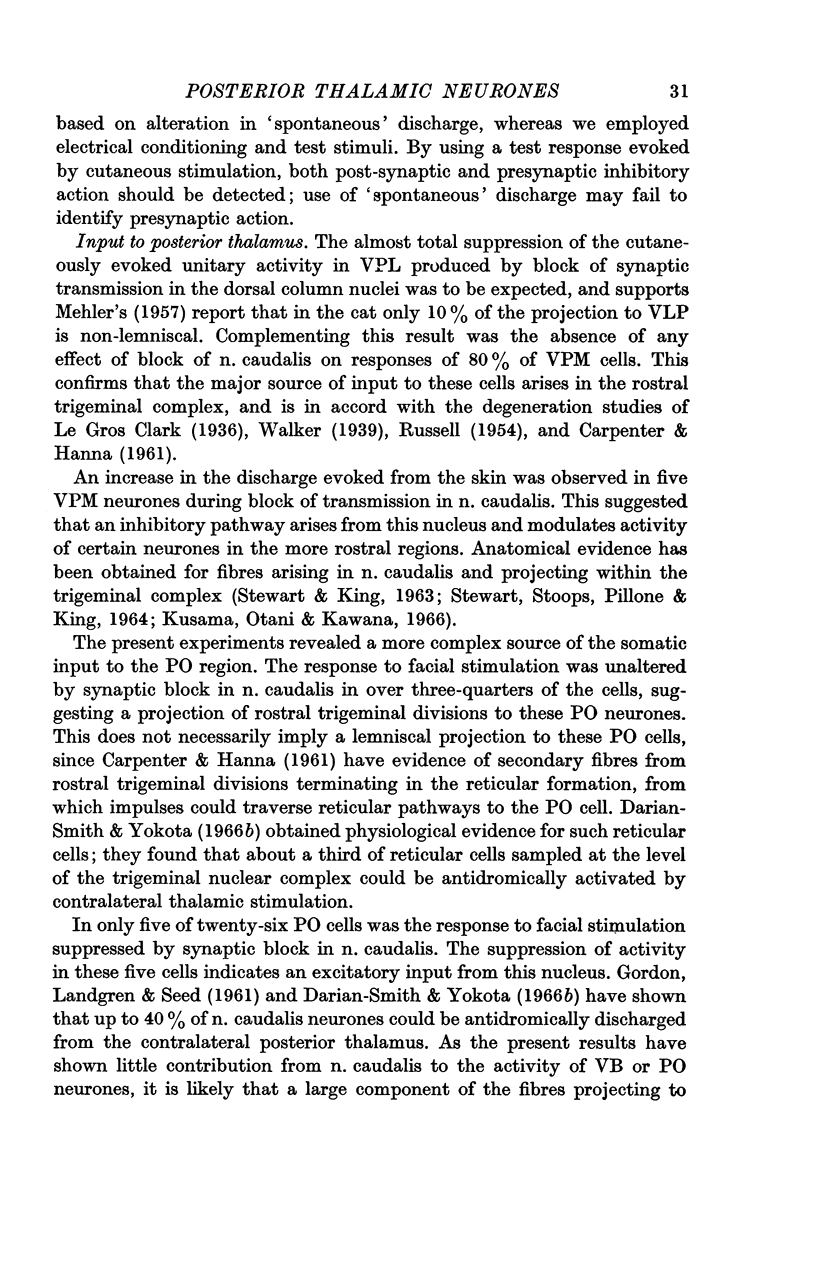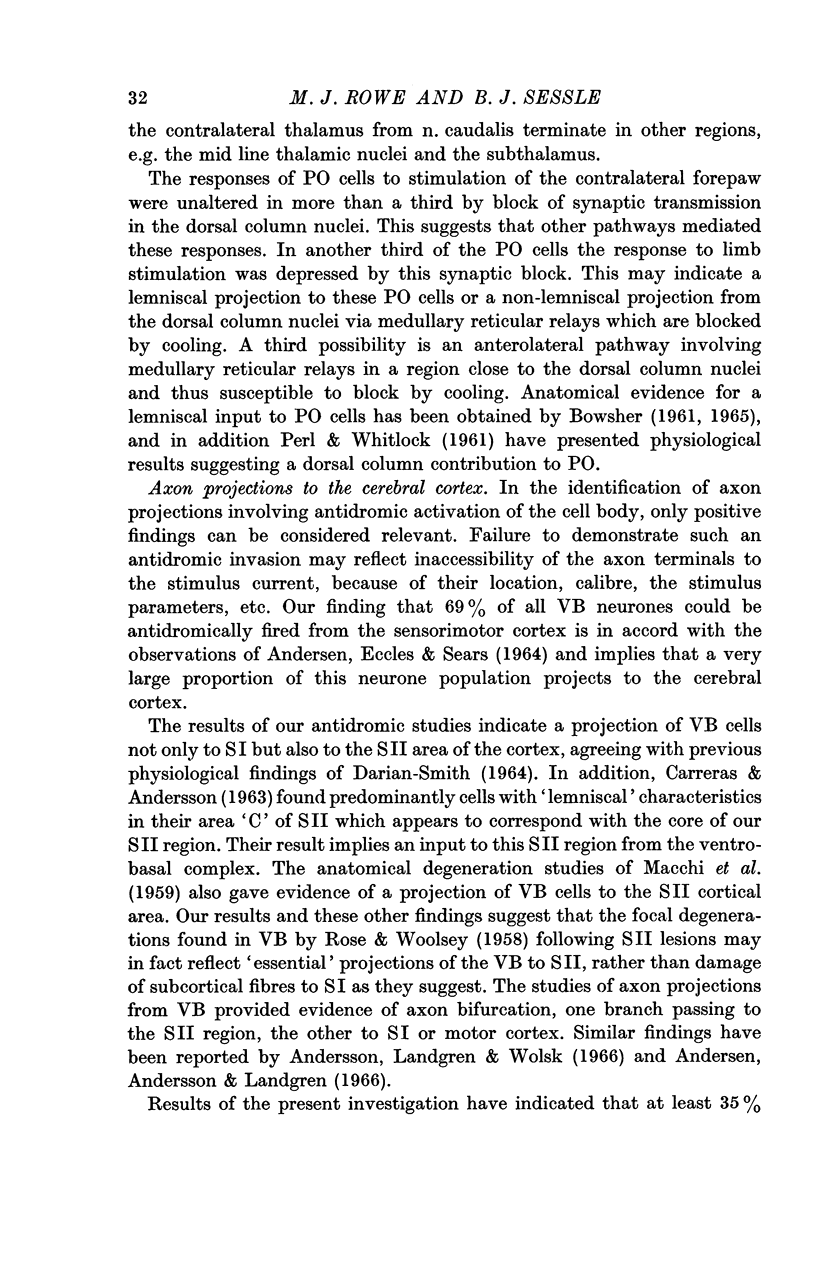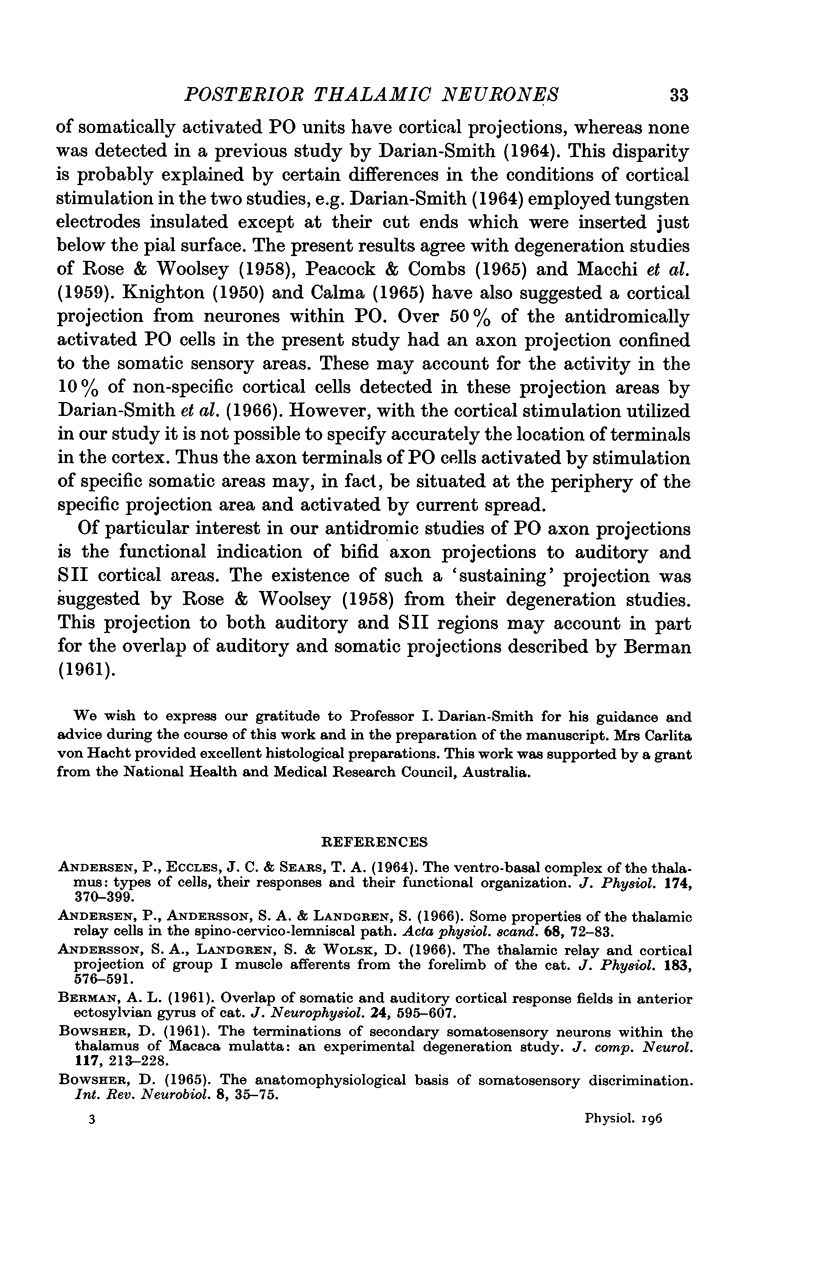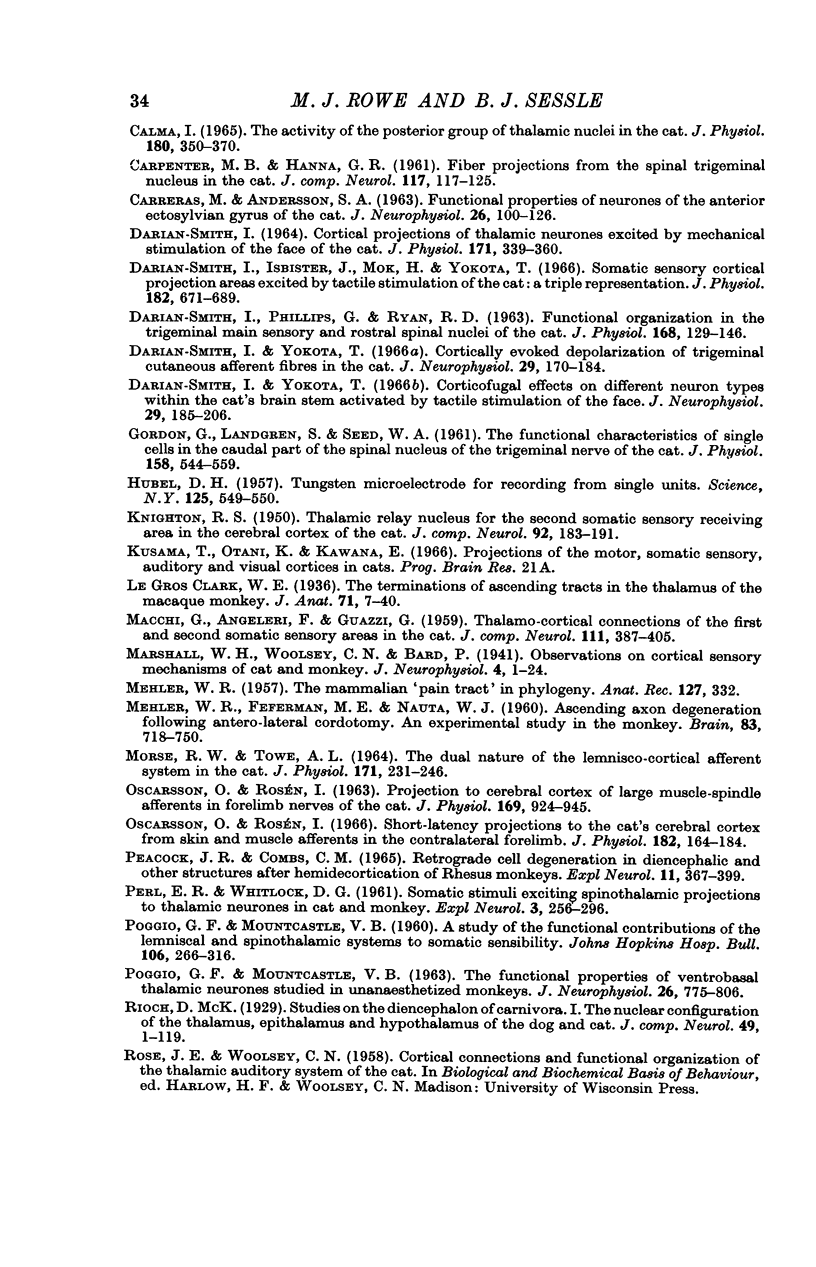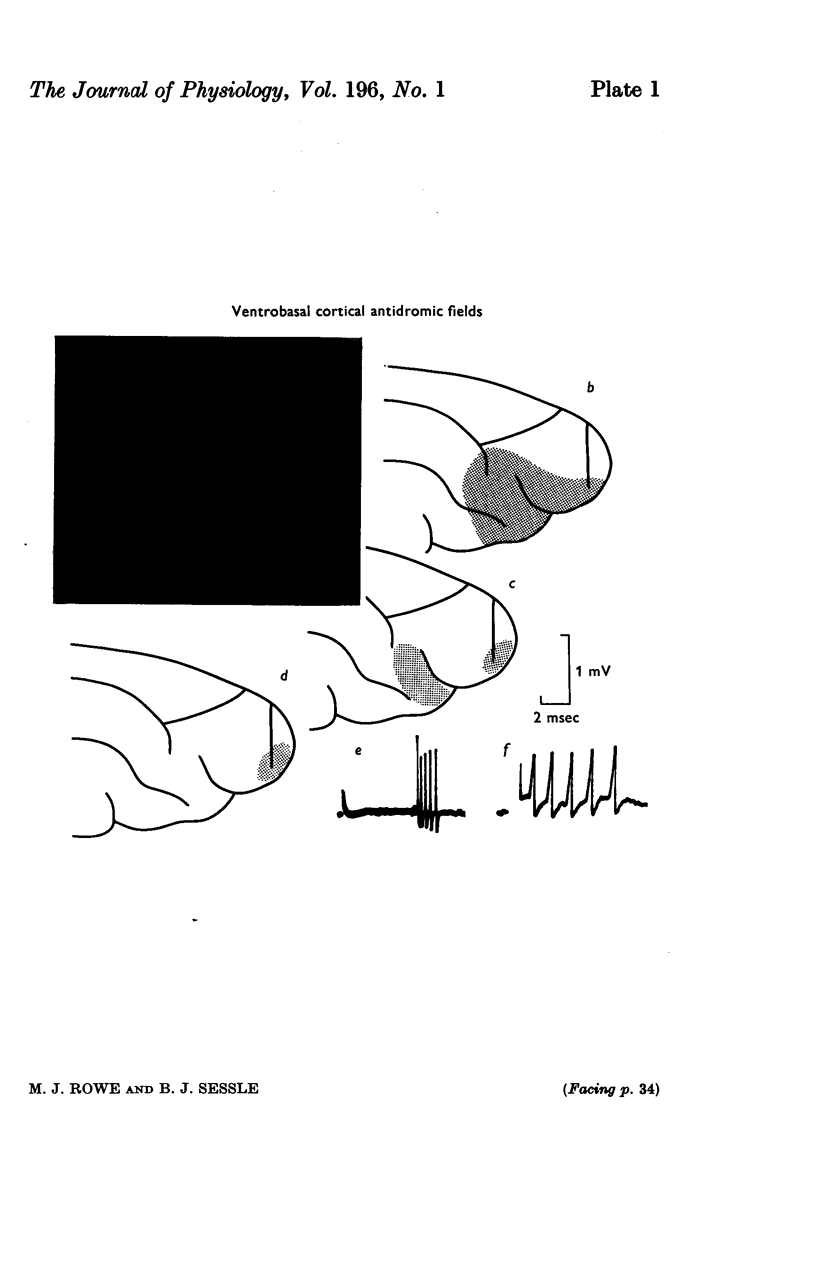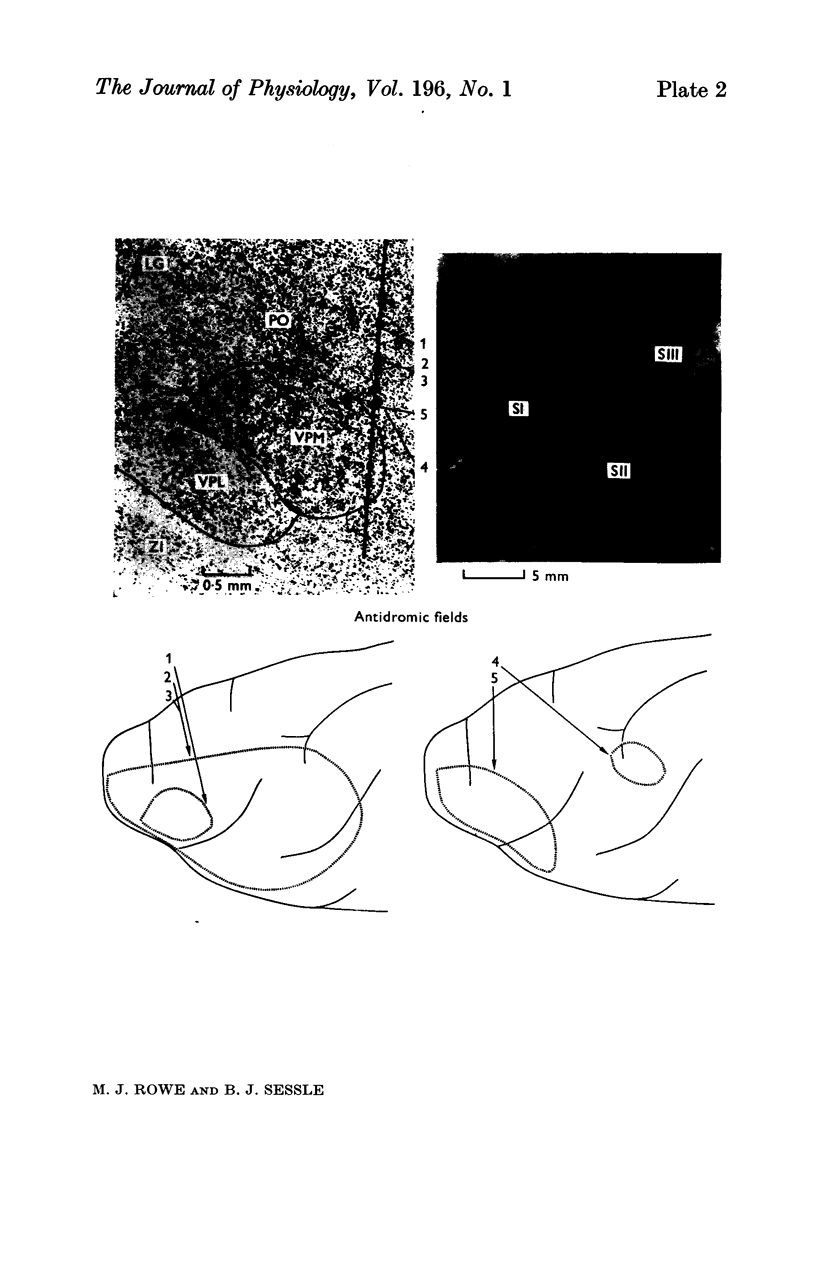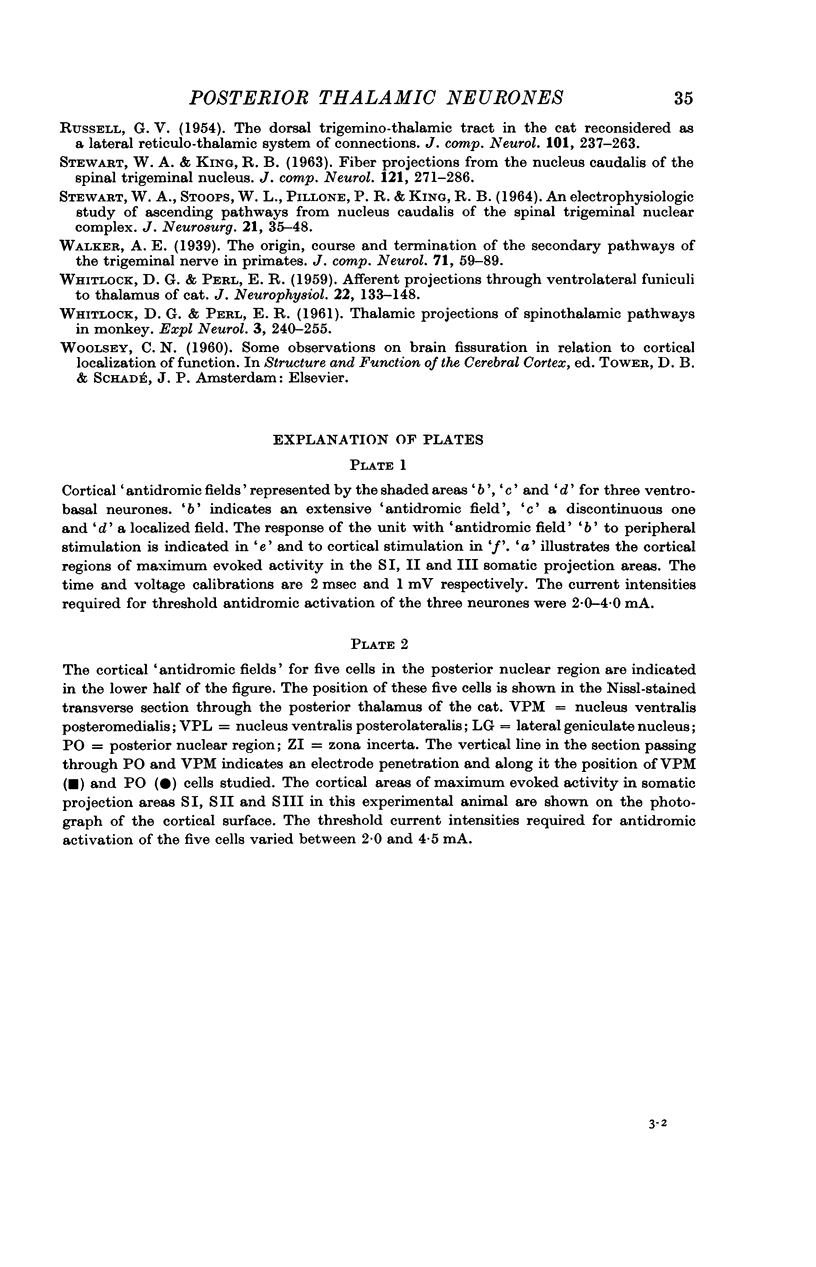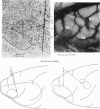Abstract
1. A technique of reversible block of synaptic transmission through the dorsal column nuclei and the trigeminal nucleus caudalis (n. caudalis) has been employed to assess the somatic afferent input to individual posterior thalamic neurones in the cat. The axon projection to the cerebral cortex of these neurones has been identified by antidromic activation following cortical stimulation.
2. Unitary responses in the nucleus ventralis posterolateralis (VPL) evoked by cutaneous stimulation were abolished or depressed following block of transmission in the dorsal column nuclei. Block in n. caudalis, however, depressed unitary responses in nucleus ventralis posteromedialis (VPM) evoked by facial skin stimulation in less than 10% of cells.
3. A more complex source of the somatic input to the posterior nuclear region of the thalamus (PO) was found. It was most commonly noted that PO unitary activity evoked by cutaneous stimulation of the face was unaffected by block of synaptic transmission in n. caudalis. No uniform effect was observed on unitary responses in PO evoked by limb stimulation when transmission in the dorsal column nuclei was blocked.
4. Antidromic activation from the cerebral cortex was seen in 69% of ventrobasal neurones. Most cells (66%) had `antidromic cortical fields' restricted to a region consisting of a third to a half of the specific somatic projection areas. In 10% of cells evidence was obtained for discontinuous cortical `antidromic fields' suggesting subcortical bifurcation of the projecting axon.
5. An axon projection to the cortex was found in 35% of PO cells, about half of which projected only to specific somatic projection areas. Evidence for subcortical branching of the axon was obtained for seven PO cells.
Full text
PDF